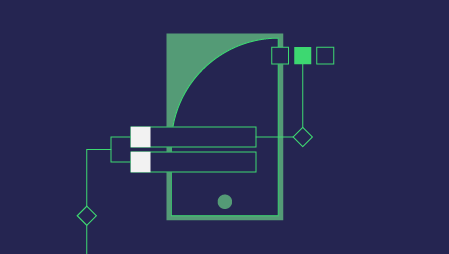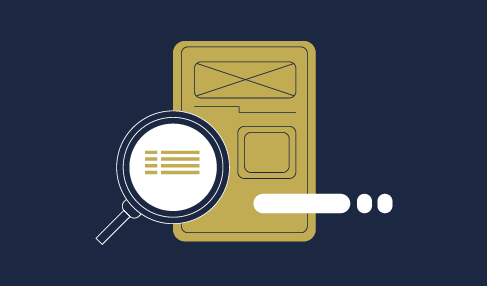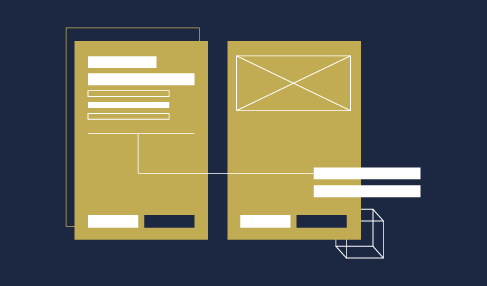A design system is a unified set of design rules and patterns that can bring huge momentum for building a product. Many big tech companies like Google (Material Design), Apple (Human Interface Guidelines), and IBM (IBM Design Language) are utilizing their own source of truth to help designers and developers focus on higher-level thinking. Rooting from their own design principles, they have successfully kept their entire product team on the same page, and speaking consistent visual language even if there are multiple products and services developing at the same time.
Yes, there are many great things that a design system can bring to the table. You might be thinking of building one for your team. It can be a luxury if you have a small, fast-paced team in a startup or in the early stage of building a fresh and new service.
You might believe it is the Chosen One, but it can turn into Darth Vader.
A design system will slow your team down if the team size is too small
One of the top reasons why startups or small teams succeed is the timing. Small teams can move, execute, and act on user needs and problems fast. Also, they can dynamically adapt to various unforeseen situations because it is easier for a small number of members to align or decide together to keep their projects moving forward.
Building and managing a design infrastructure is a huge investment. Like Jon Gold, from Airbnb has mentioned, “for each change or addition to the system, a cascade of work is created.” Behind building a design system, a lot of decisions and collaborations need to be involved among designers and developers. The team will need some workshops to kickoff, plan, and define design philosophy to create fundamentals. They will need artefacts like brand guidelines, standards, UI design kits, assets, and component libraries to share and use with others.
Also, you will need to establish an operating model and a pipeline to manage versions and releases of the design system. Design systems are “living” ecosystems that constantly need to be tracked and updated. Unless there is a team dedicated to taking full control of the whole system, like Google’s Material Design Team, it will be hectic to keep the productivity of the team.
You also need everyone’s contribution and support. Beyond designing, coding, documenting, or testing, it’s also about convincing sceptics. Ultimately, design systems are agreements and rules that should incorporate everyone’s voice and support. And, it takes a lot of effort unless everyone feels that it is right to implement a design system. You can enforce some rules, but if anyone cannot emphasize them, individuals will start to interpret them differently and waste their time trying to understand what it is about.
Therefore, it is important to measure ROI between the time spent solving user pain points and the time spent building a design system in order to keep everyone on the same page to create consistent products. If you are too focused on building a design system, you might be hooking some weights on your team’s ankle. If you are too loose on aligning design, your product or service will lose its consistency and design identity.
Think of it simply. A design system is another full product that the team needs to constantly iterate and evolve in order to make an impact on your service. If your team is too small to manage another product, it will be very painful for everyone.
Early implementation can limit a team’s creativity
The infrastructure of the design system is built around rules and disciplines. When a team’s visual, brand, or UX identity is not mature enough, the rules can act as restraints to searching and thinking beyond what is possible. Iterating quickly and prototyping fast help designers identify possible solutions. But, if there are rules that they cannot align or emphasize, they will feel stuck and waste their time understanding the rules. This means the value of saving time for the design system is diminished. If your small team is in the early stage of developing a new product, the timing and the scope of implementing a design system is very crucial.
Give the team enough time to explore, ideate, and measure in order to deeply understand what kind of visual language differentiates from other products. As visual identity is not yet set, it is highly likely that designers will pivot a lot to find the answer. And, by using user stories, UI ideations, and prototypes as a compass, they will start to understand the direction they have to take. Otherwise, the early rules will prolong the time in a long, dark tunnel.
Just as children in a fenced-in playground have greater creativity than kids in a playground without a fence, constraints help designers to produce creative decision-making and innovative solutions. Instead of thinking too big about building a design system, start small and try to use it as a constraint that designers would love.
One of the keys to building a successful design system is to nail down design principles that share the purpose and core values of products and services. They help teams with decision making and guide them in the right direction. Also, they lead to understanding how to structure their design fundamentals such as typography, colour, spacing, voice & tone, etc., which ultimately creates reusable UI components or patterns with a clear brand identity. Find product analogies, make the list of UI choices, and build value statements together with the team and the rest will follow. By using design principles as a constraint, UX, visual language, and brand identity will be reinforced and innovative solutions will follow.
Think of design systems as a toolbox instead of a rulebook that the team needs to follow. If a design system contains too many rules to follow, it will become a burden instead of just constraints.
Be patient, start small. When little wins stack up, your product will be the Chosen One.





